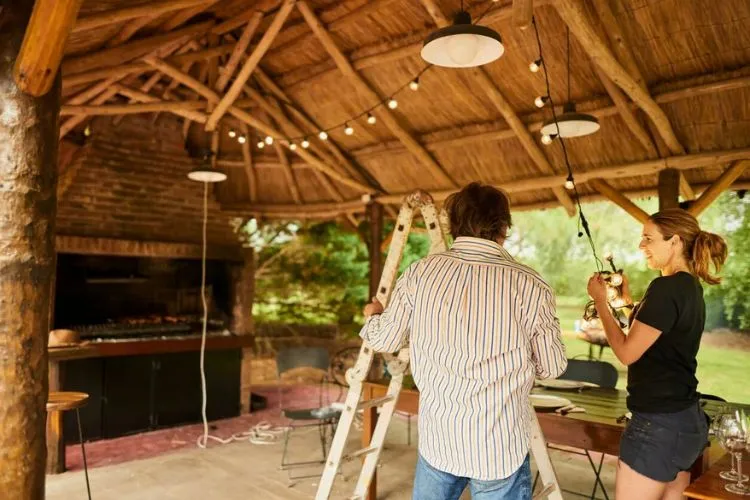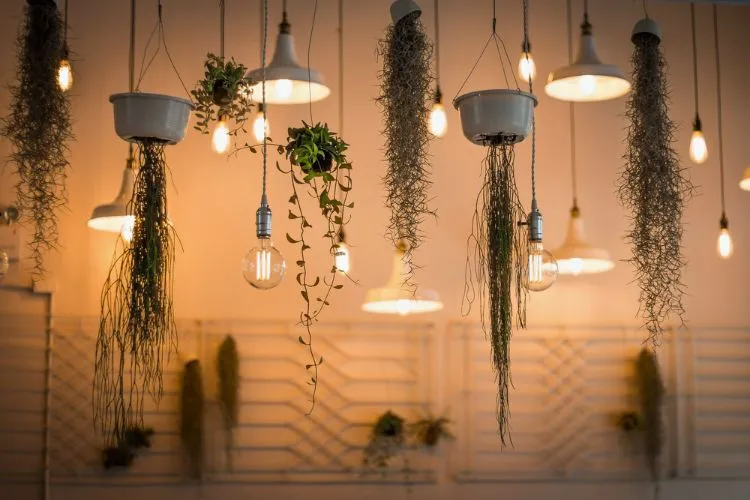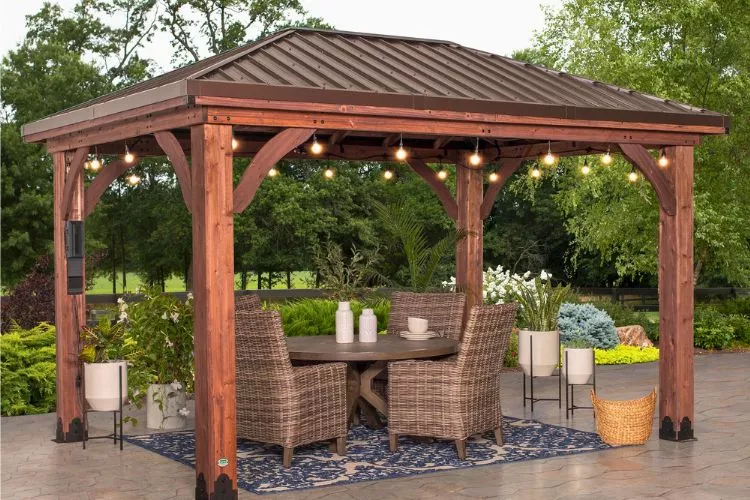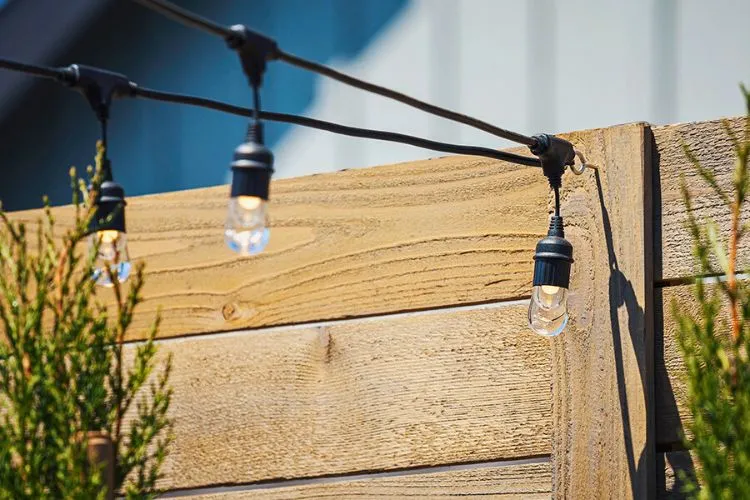Learning exactly how to hang lights on metal gazebo is a straightforward process that can transform your backyard into a mesmerizing spot after sunset.
Metal gazebos, in particular, offer the perfect blend of sturdy structure and aesthetic charm.
This comprehensive guide will walk you through the intricate details of hanging lights on your metal gazebo, adding flair to your evenings.
Lighting can dramatically amplify the charm of outdoor spaces. The right kind of illumination adds a touch of class, warmth, and an inviting aura to your backyard.

For evening gatherings with friends or unwinding in solitude after a long day, lights can prove to be magical.
And when it comes to metal gazebos, the star element in most gardens, the elegance amplified by apt lighting is unparalleled.
Keep reading to explore techniques that will take your gazebo lightning to next level.
Contents
- 1 Preparing to Hang Lights on Your Metal Gazebo
- 2 How To Hang Lights On Metal Gazebo: Step-by-Step Hanging Methods
- 3 Safety Precautions and Maintenance
- 4 Illumination Inspiration
Preparing to Hang Lights on Your Metal Gazebo

Assessing Your Gazebo Structure
No two metal gazebos are identical. The first step towards hanging lights is understanding the structure and material of your gazebo.
From the resilient iron to the more flexible aluminum, the base material of your gazebo significantly influences your light hanging method.
An assessment helps identify how your chosen lights can be distributed for a balanced look without causing damage to the structure.
Identification of the most rigid attachment points on your gazebo is a crucial part of the process. The intersection points where the horizontal and vertical bars connect are usually the most reliable.
Strategically placing lights around these junctions ensures weight distribution and reduces the pressure on individual bars.
Choosing the Right Lights
Your gazebo lighting would be incomplete without the appropriate lights. Reflecting the desired ambiance and ensuring the structural integrity of your gazebo requires balancing several factors.

The first is the weight of the lights. Light strands with plastic housings are usually lighter than those with glass. Given that your gazebo will be exposed to the weather, opting for weather-resistant and ideally waterproof bulbs adds to the longevity of your setup.
The power source also warrants consideration. From solar to battery-powered lights, the choice depends on your garden’s layout and where your power outlets are located.
Gather Your Tools and Materials
Preparation before initiation is the key to smooth execution. Knowing what tools you’ll need and having them at your disposal saves a lot of hassle and time.
More often than not, a sturdy ladder, light clips, and ties are crucial components of the setup. Consider wearing a pair of work gloves to protect your hands against potential scrapes and cuts from the metal edges.
How To Hang Lights On Metal Gazebo: Step-by-Step Hanging Methods
Using Adhesive-Backed Hooks
Adhesive-backed hooks are easy to install and versatile. They can be simply pressed onto a clean, dry part of the gazebo, providing a secure holder for your lights.
However, to ensure they stand the test of time and weather, the weight capacity of the hooks should be checked and matched to your lights. It is critical to guarantee they can withstand the culmination of your lights’ weight under different weather conditions.
Attaching with Magnetic Hooks
Magnetic hooks offer a secure grip that can be removed without causing any damage to your gazebo’s finish. They work exceptionally well for gazebos made of iron or steel.

Distribute the hooks at regular intervals, ensuring that each hook adheres securely to provide a balanced light distribution. Keep a watchful eye for any signs of rust developing on the magnetic hooks. Any rust can stain and cause permanent damage to your gazebo.
Implementing Shingle Tabs or Staples
Though shingle tabs and staples present an option, they require careful handling. The sharp ends can potentially puncture the metal, leading to unwanted damage.
Use them on thicker parts of the gazebo where minor impairments won’t cause significant damage.
Once installed, staples call for periodic inspection to spot any signs of rust, which can negatively affect your gazebo over time.
Utilizing Wire Ties or Zip Ties
Wire ties (also known as zip ties) can provide a neat, strong grip for your light strings. This method also allows for quick and easy removal or adjustment of the lights as needed.

Ensure to evenly space the ties throughout your setup to balance the overall weight of the lights.
Avoid pulling your zip ties too tightly when securing them. Doing this avoids leaving any unnecessary indentations or marks on your gazebo’s frame.
Specialty Clips and Hangers
The market is replete with clips and hangers specifically designed for hanging lights on various structures, including gazebos.
Opting for these ensures that the hold is secure, and your gazebo’s structure remains intact. They’re also relatively easy to set up and dismantle, making them a preferred choice for temporary, seasonal setups.
Safety Precautions and Maintenance
Safety should be the underpinning element of your setup. Engaging in regular maintenance checks can safeguard its longevity. Remember, regular maintenance now can save you from unwanted surprises later.
Electrical Safety for Outdoor Lighting
When dealing with electricity outdoors, safety should never be compromised. If you’re using extension cords for power, ensure they’re rated for outdoor use.
If you’re using power outlet connections, they should be fitted with ground fault circuit interrupters (GFCIs). GFCIs can prevent potential electrical shocks, which are more likely in outdoor setups due to weather conditions.
It’s also important to routinely verify that your cords aren’t fraying, especially near the plug areas, and that they remain dry at all times.
Regular Maintenance and Upkeep
A routine cleaning of your bulbs can keep them glowing and enhance their lifespan. For setups meant for specific seasons, ensure that you dismantle and store the lights appropriately once the season is over.
After each season, especially if it has been marked with challenging weather, inspect your gazebo and its fixtures for any potential damage.
Illumination Inspiration

Creative Layout and Design Ideas
There’s no hard and fast rule when it comes to the layout of your lights. Feel free to experiment with the endless possibilities, whether you want to loop them from the center point of the gazebo to its sides, edge them around the top, or let them cascade down, creating a surreal effect.
Innovative Use of Colors and Lighting Types
Experimentation doesn’t stop with lighting arrangements; it extends to the array of lights available. Mixing and matching different colored bulbs can create varied themes and moods, while alternating between delicate fairy lights and the bright LED lights can create an entirely different ambiance.
Solar-powered lights can be an environment-friendly yet enchanting option. In essence, successful gazebo lighting combines the need for safety, durability, and aesthetics.
With a bit of planning, creativity, and diligence towards maintenance, your run-of-the-mill gazebo can transform into a breathtaking centerpiece that adds life to your garden after the sun goes down.
Here’s an additional 300 words that fit naturally before the conclusion:
Creative Layout and Design Ideas for Hanging Lights on Your Metal Gazebo
When it comes to designing your gazebo lighting, creativity is key. The goal is to transform your outdoor space into a magical setting that complements your evening activities.
The beauty of lighting on a metal gazebo is that you can experiment with different patterns, styles, and colors to achieve a truly unique look.
Looping Lights Around the Structure
One of the most popular methods is to loop string lights around the frame of the gazebo. Start at the top and work your way down, creating a continuous line of light that traces the structure.
This technique gives the gazebo a soft, uniform glow and is ideal for more traditional or romantic settings. You can also loop lights diagonally across the frame to create intersecting patterns that provide dynamic visual interest.
Cascading Lights for a Dramatic Effect
For a more dramatic effect, consider allowing your lights to cascade down from the center of the gazebo. This can create a waterfall-like effect that adds both elegance and whimsy to your setup.
You can also place additional lighting at the base of the structure to amplify the cascading light effect, which works especially well for evening parties or outdoor gatherings.
Combining LED Lights and Fairy Lights
Mixing different types of lights can produce varied and beautiful effects. For instance, combining bright LED lights with delicate fairy lights allows you to control the ambiance—using LED lights for functionality and fairy lights for a magical, ethereal atmosphere.
The LED lights can provide enough illumination for clear visibility, while the fairy lights add a touch of romance and charm.
Experimenting with Color and Mood
While traditional white lights are classic, don’t be afraid to experiment with color. String lights in shades of blue, purple, or red can evoke different moods depending on the occasion.
Warm yellow lights can create a cozy and inviting atmosphere, while cooler tones like blue and green can evoke tranquility and relaxation.
Conclusion:
Transforming your garden with lights on a metal gazebo is an endeavor worth the effort. From planning and preparation to the final flick of the switch, each step can significantly impact the overall ambiance of your outdoor space.
The key lies in selecting the right lights, employing the proper hanging methods, and adhering to safety

Sergio Gomes, a passionate advocate for outdoor living and the male voice behind Shades Authority. With years of experience, Sergio is your trusted source for expert insights on gazebos, pavilions, cabanas, pergolas, and all things outdoor shade solutions. Join him on a journey to transform your outdoor spaces into stunning, functional retreats
